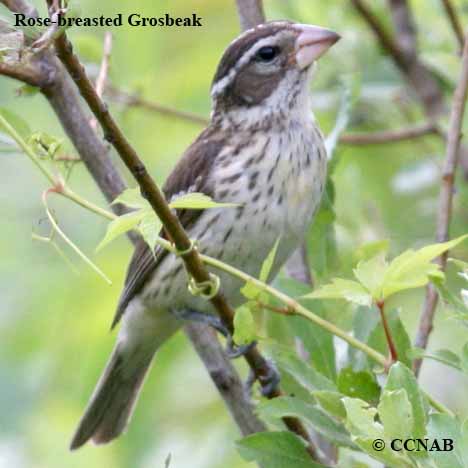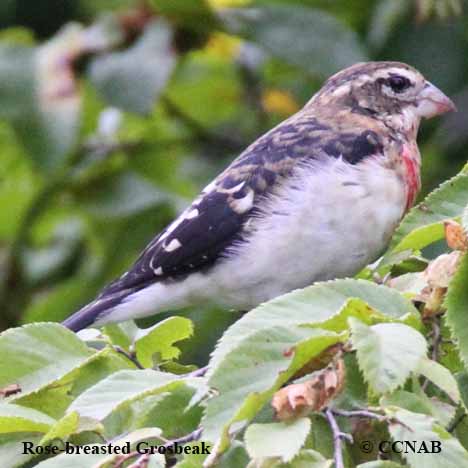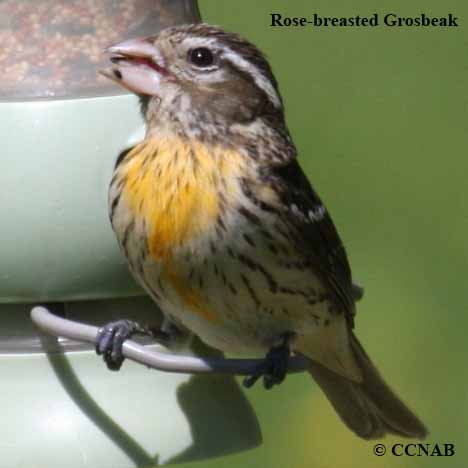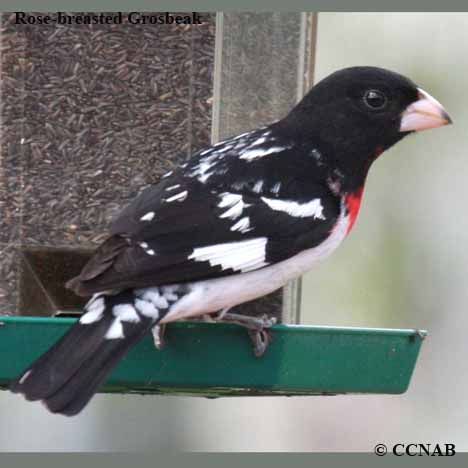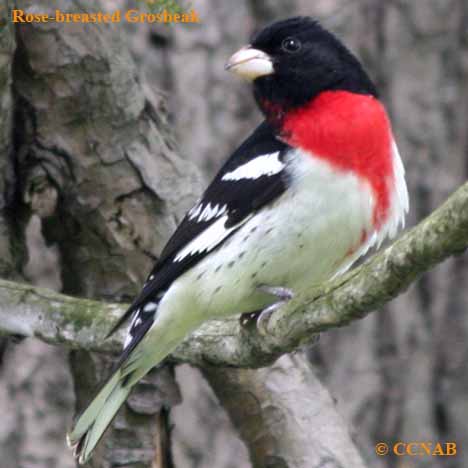North American Bird Search Box
This search box can be used to find bird species using bird's english, french or latin name, or to identify bird by its 4 letter Alpha Code
Field Guide for all the Birds of North America
Rose-breasted Grosbeak
4 Letter (english names) Alpha Code: RBGR (1)
Cardinal à poitrine rose
Pheucticus ludovicianus
Information, images and range maps on over 1,000 birds of North America, including sub-species, vagrants, introduced birds and possibilities
Species: This grosbeak is an attractive large billed forest dwelling bird that is found throughout most of Canada and into the eastern regions of the USA. Usually seen at bird feeders in the springtime, where it is attracted to black-oil sunflower seeds. Its diet consists of seeds, insects and fruit.
Distinctions: Sexually dimorphic, whereas the male in breeding plumage is seen with a black head, back, tail and wings, with white wingbars. It received its name because of its rose-coloured bib-type band on a white breast. Overall the female is mainly brown in appearance, with brown streaking on a dull white breast. Juveniles are similar to the females, as are the males when seen in non-breeding plumage during the winter months.
Voice: Loud flute-like warbling lyrics, usually sung from high up in the crown of the tree tops.
Nesting: Four to five purplish, white spotted eggs. Builds its nest in a deciduous forest and forest edges. The Rose-breasted Grosbeak will have one to two broods per year.
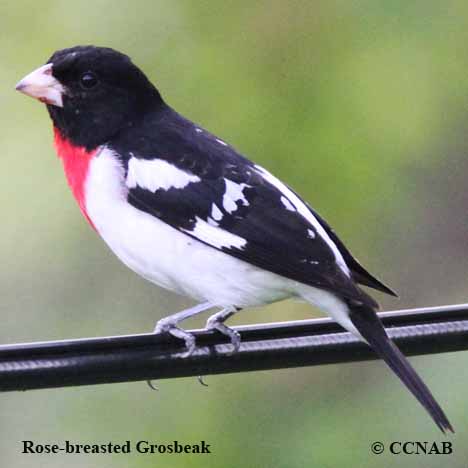
Life, Habitat & Pictures of North American Grosbeaks
| B L | W W | W | Family | Latin Name |
|---|---|---|---|---|
| 8" 20.3cm | 12.5" 31.7cm | 1.6oz 45.4g | Cardinalidae | Pheucticus ludovicianus |
North American Birds Videos
- Click here - Male
North American Bird Calls
- Click here
- Click here
- Summer
- Year Around
- Winter
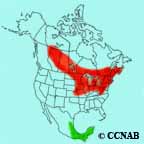
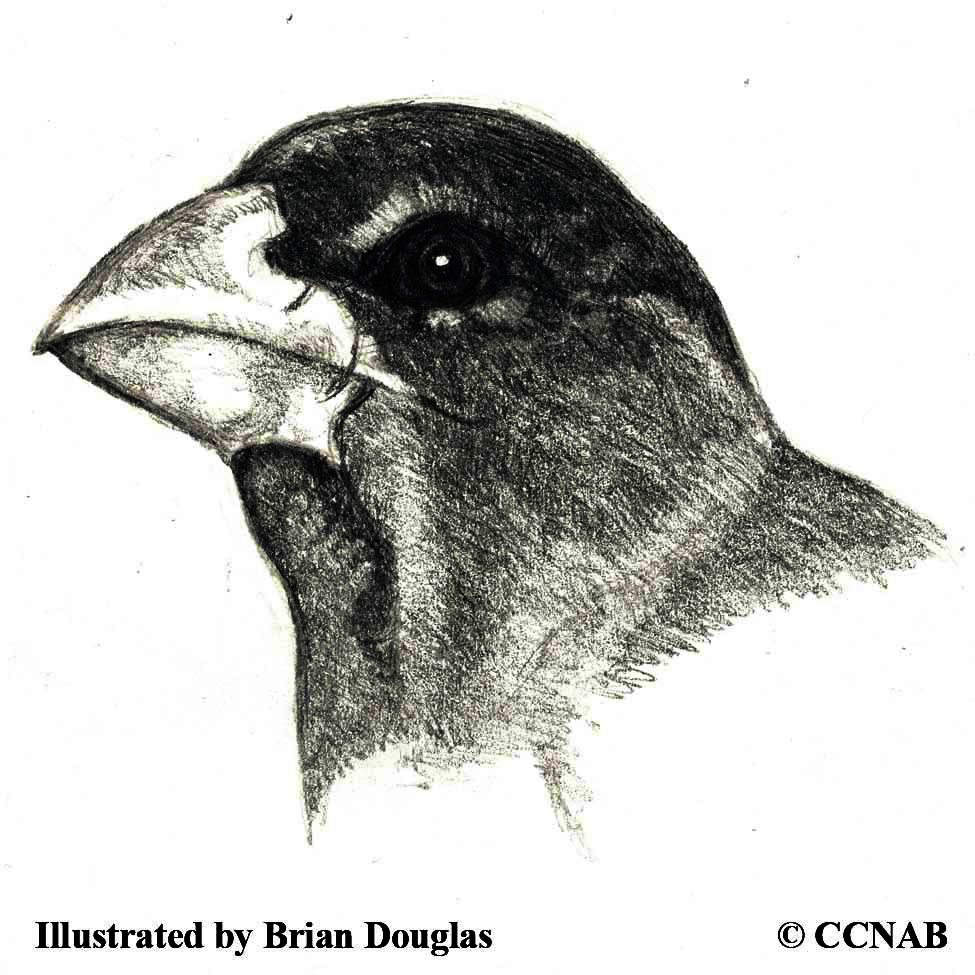
Distribution: Seen in the breeding season, from Nova Scotia to the borders of British Columbia and the Northwest Territories, into the central regions of the USA to the Atlantic coast. Migrates into Mexico and Central America in late fall and returns back in late April and early May the following year.
Reference to Other Bird Site:
ABA - American Birding Association This site represents an organization that maintains official records of all birds species that have been proven to have been seen inside the perimeters of the North American Continent and the surrounding bodies of water. Regular revised versions are posted to keep the bird list current at all times. This is the list used by all serious birders over their lifetime. You may be aware of the movie called the "Big Year". It was with this list that all the competing birders used in an attempt to set a new record as to how many bird species that could be seen by an individual birder in one calendar year.
